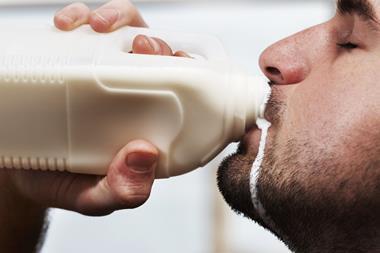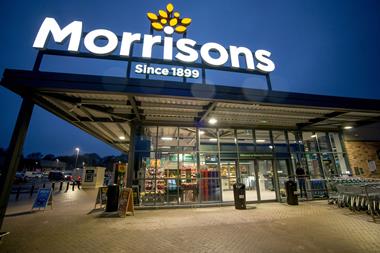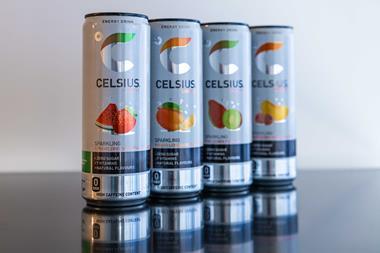HG Wells once described advertising as legalised lying. It's a view that lobby groups against the food and drink industry share. It tricks kids into eating sugary, salty, fatty foods, they say, and has caused an obesity crisis.
Understandably, growing obesity levels spooked the government. In 2004, it published Choosing Health, a White Paper with 91 recommendations. Among the targets was advertising, with the nature, the balance and the volume of ads comprising three of the recommendations.
As a result, this year Ofcom banned the industry from advertising products high in fat, salt and sugar (HFSS) to children under 12 on all mainstream television channels. And, on 1 January next year, the advertising restrictions will be extended to children up to the age of 16, with ads for HFSS foods being phased out for music and children's channels by 2009.
But is it enough to stop these highly politicised lobbyists calling for a dreaded extension of the restrictions up to the 9pm watershed?
With the government conducting an interim report on food and soft drink advertising this autumn, and a full assessment of the recommendations regarding advertising to be carried out in 2008, and Ofcom also due to undertake a review of its restrictions next year, media trade body the Advertising Association last week produced a report showcasing the changes that the industry was undertaking to get its house in order.
In fact, the report shows the industry had been responding to these concerns for some time before the restrictions even came into effect.
Between 2003 and 2006, advertising of 'scrutiny' products - confectionery, crisps and snacks, full-sugar carbonated drinks and breakfast cereals - fell 18%, with manufacturers voluntarily reducing advertising expenditure on these products by £41m. Exposure of children aged 4-15 to core category ads across all content and all commercial TV channels declined by 22%.
In the meanwhile advertising spend on better-for-you products increased by 61% on TV and 130% in other media. TV ad spend on fruit and veg increased by 35%, while spend in other media soared by 327%.
Some manufacturers have clearly gone further than others. Mars UK halted advertising to younger children altogether in February. And Kellogg's also this year promised firstly not to direct any adverts at children under the age of six and then, in June, announced that products that did not meet new in-house guidelines for nutritional value would either be reformulated or not advertised to children under the age of 12.
Coca-Cola says it has not advertised to children under 12 for many years. But earlier this year it addressed concerned about promotions using the internet by dropping brand-specific websites for kids.
The impact of the recent ban had further limited exposure. In the first seven weeks since the new restrictions came into force, the number of core category ads (all food, drink and fast food restaurants) watched by four to nine-year-olds on TV fell 29% compared with the same period in 2006.
Significant progress on two other recommendations of the White Paper has also been made, with the promotion of the 5-a-day message embraced by the industry; and the introduction of simple labelling of packaged food through GDAs, traffic lights and various hybrid combinations thereof.
Baroness Peta Buscombe, chief executive of the Advertising Association, believes further regulation against the industry should be avoided. "The future solution must be better self-regulation and restraint by the advertising industry and not unwelcome and restrictive regulation."
Association director Sue Eustace, adds: "We hope the government allows the industry breathing space to settle into the new regulations, and is able to recognise that so much has been done already."
Some suppliers are confident that the hard work they have put in will mean further legislation can be avoided. "I think it would have to be a very compelling argument before further legislation would be justified," says Rupert Maitland-Titterton, head of public affairs at Nestlé. "Since the White Paper was published we have seen the food industry - more often than not voluntarily - significantly reformulate products and change the nature of advertising."
Nestlé, he points out, is unable to advertise cereals such as Cheerios to kids, but instead now tells adults about the wholegrain goodness of its products.
Perhaps the hardest aspect to stomach with the obsession with advertising is the strong evidence in the report to suggest that advertising plays a minor part, at best, in obesity. Government figures to 2005 show obesity levels among the under-10s continued to rise, while the report also pointed out that FSA and Ofcom research showed advertising only has a modest effect on children's food preferences.
"Obesity will only be successfully addressed by a holistic and wide-ranging approach, not by further advertising bans or restrictions," says Buscombe.
The government should now turn its attention, believes Maitland-Titterton, to the remaining 88 recommendations of the Choosing Health White Paper, including a number of elements specifically related to food and drink over which the industry has no control (see box).
"Have we done enough yet? It is so hard to know because the rules need time to take root. Thankfully the debate on obesity seems to be switching its attention away from the industry and back towards the need for personal common sense."
The FDF takes a more pessimistic view. "This issue is far from over," says Julian Hunt, FDF director of communications. "The whole advertising landscape is changing, and this time next year we will see even more vast and far-reaching changes."
Buscombe argues its work is far from over. "A lot has been done, but the work goes on. The industry must address the issue of how to regulate digital media as technological advances, digitization and the convergence of media change the nature of advertising.
"That is why the Association has brought together a group of representatives with specialist knowledge and expertise from agencies, digital media platforms, advertisers and traditional media, to work together to find a long-term solution that is robust, fair and workable."n
The Grocer will be hosting a conference on 'The White Paper' in November. For more details contact mark.skelton@thegrocer.co.uk.The 13 other ways in which the government said it would tackle obesity:
1 Implement a new cross-government campaign to raise awareness of the health risks of obesity and the steps people can take through diet and physical activity
2 Act on National Institute for Clinical Excellence guidance on prevention, identification and treatment of obesity
3 Produce a weight loss guide with effective approaches to maintain a healthy weight
4 Set up an independent national partnership for obesity
5 Allocate new funding for evidence-based obesity prevention and treatment
6 Provide more education and training for health care staff
7 Provide greater community-based services such as food advisers in supermarkets
8 Reduce inequalities in opportunities for children to make healthy choices
9 Half of all schools to be 'healthy schools' by 2006, with the rest by 2009
10 Reduce consumption of fat, salt, sugar, and increase consumption of fruit, veg and other essential nutrients in school meals
11 Actively promote healthy food and drink as part of an enjoyable and balanced diet
12 Use the NHS to help people develop their own personal health plans
13 New initiatives to promote physical activities and sport inside and outside school


















No comments yet